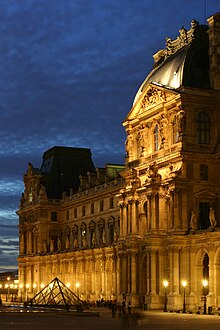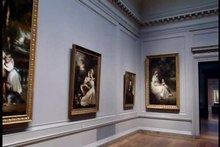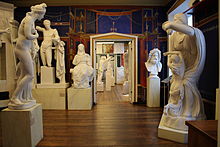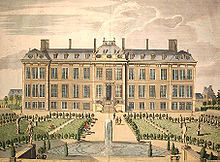Watching you as it seems you walked from the tar itself,
the hide of your toughness ran to such an ink in that eye of the tiger's mass,
as the tree's did bow to your grace I bravo the years as what is a dove,
flight on that plain to the cry of gruff,
it is the handsome that still blush,
the step from the raise to evolution by played in an opera of symphony that bush fired sage!
Sky must scene to that echelon blue as your bride of marriage in humanities,
the armor of in light to moon,
a true sun as the star in history be sung!
Mice can say to the Moose on my land,
antelope grain and the cow of patience,
depth of river's piled with bone,
yet on that horn is the elephant graced.
Songs in Mankind the harp and the bass,
gulping fish with crocodile faced,
dinosaur ran 'till the earth gave it's lace,
drink of that is the ice on a glacier just bearing to say this is grizzly by mace.
Oh ocean of bay on an in the water of wave,
might the ancient trail to where place is no fear,
might the road be find as so many days I have traced,
all for the rhino on these dimes that I've paced.
Art museum
An art museum or art gallery is a building or space for the exhibition of art, usually visual art. Museums can be public or private, but what distinguishes a museum is the ownership of a collection. Paintings are the most commonly displayed art objects; however, sculptures, decorative arts, furniture, textiles, costumes, drawings, pastels, watercolors, collages, prints, artist's books, photographs, and installation artare also regularly shown.[1] Although primarily concerned with providing a space to show works of visual art, art galleries are sometimes used to host other artistic activities, such as performance arts, music concerts, or poetry readings.
Contents
[hide]Types of galleries[edit]
The term is used for both public galleries, which are non-profit or publicly owned museums that display selected collections of art. On the other hand, private galleries refers to the commercial enterprises for the sale of art. However, both types of gallery may host traveling exhibits or temporary exhibitions including art borrowed from elsewhere.
In broad terms, in North American usage, the word gallery alone often implies a private gallery, while a public gallery is more likely to be described as an art museum. In British and Commonwealth usage, the word gallery alone implies a public gallery, while a private or commercial gallery will be distinguished using those terms, and the word museum alone is generally understood to refer to institutions holding collections of historic, archaeological or scientific artefacts, rather than of fine art.
Galleries in museums[edit]
The rooms in museums where art is displayed for the public are often referred to as galleries as well, with a room dedicated to Ancient Egyptian art often being called the Egyptian Gallery, for example.
Contemporary gallery[edit]
The term contemporary art gallery refers usually to a privately owned for-profit commercial gallery. These galleries are often found clustered together in large urban centers. Smaller cities are usually home to at least one gallery, but they may also be found in towns or villages, and remote areas where artists congregate, e.g. the Taos art colony and St Ives, Cornwall.
Contemporary art galleries are usually open to the general public without charge; however, some are semi-private. They usually profit by taking a portion of art sales; from 25% to 50% is typical. There are also many non-profit or collective galleries. Some galleries in cities like Tokyo charge the artists a flat rate per day, though this is considered distasteful in some international art markets. Galleries often hang solo shows. Curators often create group shows that say something about a certain theme, trend in art, or group of associated artists. Galleries sometimes choose to represent artists exclusively, giving them the opportunity to show regularly.
A gallery's definition can also include the artist cooperative or artist-run space, which often (in North America and Western Europe) operates as a space with a more democratic mission and selection process. Such galleries typically have a board of directors and a volunteer or paid support staff that select and curate shows by committee, or some kind of similar process to choose art that typically lacks commercial ends.
Vanity galleries[edit]
A vanity gallery is an art gallery that charges fees from artists in order to show their work, much like a vanity press does for authors. The shows are not legitimately curated and will frequently or usually include as many artists as possible. Most art professionals are able to identify them on an artist's resume.[2]
University museums and galleries[edit]
University art museums and galleries constitute collections of art that are developed, owned, and maintained by all kinds of schools, community colleges, colleges, and universities. This phenomenon exists in both the West and East, making it a global practice. Although largely overlooked, there are over 700 university art museums in America alone. This number, in comparison to other kinds of art museums, makes university art museums perhaps the largest category of art museums in the country. While the first of these collections can be traced back to learning collections developed in art academies in Western Europe, they are now most often associated with and housed in centers of higher education of all types.
History[edit]
Private collections[edit]
Throughout history, large and expensive works of art have generally been commissioned by religious institutions and monarchs and been displayed in temples, churches, and palaces. Although these collections of art were private, they were often made available for viewing for a portion of the public. In classical times, religious institutions began to function as an early form of art gallery. Wealthy Roman collectors of engraved gems (including Julius Caesar) and other precious objects often donated their collections to temples. It is unclear how easy it was in practice for the public to view these items.
In Europe, from the Late Medieval period onwards, areas in royal palaces, castles, and large country houses of the social elite were often made partially accessible to sections of the public, where art collections could be viewed. At the Palace of Versailles, entrance was restricted to people wearing the proper apparel – the appropriate accessories (silver shoe buckles and a sword) could be hired from shops outside. The treasuries of cathedrals and large churches, or parts of them, were often set out for public display. Many of the grander English country houses could be toured by the respectable for a tip to the housekeeper, during the long periods when the family were not in residence.
Special arrangements were made to allow the public to see many royal or private collections placed in galleries, as with most of the paintings of the Orleans Collection, which were housed in a wing of the Palais-Royal in Paris and could be visited for most of the 18th century. In Italy, the art tourism of the Grand Tour became a major industry from the 18th century onwards, and cities made efforts to make their key works accessible. The Capitoline Museums began in 1471 with a donation of classical sculpture to the city of Rome by the Papacy, while the Vatican Museums, whose collections are still owned by the Pope, trace their foundation to 1506, when the recently discovered Laocoön and His Sons was put on public display. A series of museums on different subjects were opened over subsequent centuries, and many of the buildings of the Vatican were purpose-built as galleries. An early royal treasury opened to the public was the Grünes Gewölbe of the Kingdom of Saxony in the 1720s.
Privately established museums open to the public began to be established from the 17th century onwards, often based around a collection of the cabinet of curiosities type. The first such museum was the Ashmolean Museum in Oxford, opened in 1683 to house and display the artefacts of Elias Ashmole that were given to Oxford University in a bequest.
Public galleries[edit]
In the second half of the eighteenth century, many private collections of art were nationalised and opened to the public.
In 1753, the British Museum was established and the Old Royal Library collection of manuscripts and artwork was donated to it for public viewing. In 1777, a proposal to the British government was put forward by MP John Wilkes to buy the art collection of the then late Sir Robert Walpole who had amassed one of the greatest such collections in Europe, and house it in a specially built wing of the British Museum for public viewing. After much debate, the idea was eventually abandoned due to the great expense, and twenty years later, the collection was bought by Tsarina Catherine the Great of Russia and housed in the State Hermitage Museum in Saint Petersburg.[3]
The Bavarian royal collection (now in the Alte Pinakothek, Munich) was opened to the public in 1779 and the Medici collection in Florencearound 1789[4] (as the Uffizi Gallery). The opening of the Musée du Louvre during the French Revolution in 1793 as a public museum for much of the former French royal collection marked an important stage in the development of public access to art by transferring the ownership to a republican state; but it was a continuation of trends already well established.[5] The building now occupied by the Prado in Madrid was built before the French Revolution for the public display of parts of the royal art collection, and similar royal galleries were opened to the public in Vienna, Munich and other capitals. In Great Britain, however, the corresponding Royal Collection remained in the private hands of the monarch and the first purpose-built national art galleries were the Dulwich Picture Gallery, founded in 1814 and the National Gallery opened to the public a decade later in 1824.
Visual art not shown in a gallery[edit]
Works on paper, such as drawings, pastels, watercolors, prints, and photographs are typically not permanently displayed for conservation reasons. Instead, public access to these materials is provided by a dedicated print study room located within the museum. Murals generally remain where they have been painted, although many have been removed to galleries. Various forms of 20th-century art, such as land art and performance art, also usually exist outside a gallery. Photographic records of these kinds of art are often shown in galleries, however. Most museum and large art galleries own more works than they have room to display. The rest are held in reserve collections, on or off-site.
Similar to an art gallery is the sculpture garden (or "sculpture park"), which presents sculpture in an outdoor space. Sculpture installation has grown in popularity, whereby temporary sculptures are installed in open spaces during events like festivals.
Architecture[edit]
The architectural form of the art gallery was established by Sir John Soane with his design for the Dulwich Picture Gallery in 1817. This established the gallery as a series of interconnected rooms with largely uninterrupted wall spaces for hanging pictures and indirect lighting from skylights or roof lanterns.
The late 19th century saw a boom in the building of public art galleries in Europe and America, becoming an essential cultural feature of larger cities. More art galleries rose up alongside museums and public libraries as part of the municipal drive for literacy and public education.
In the middle and late 20th century, earlier architectural styles employed for art museums (such as the Beaux-Arts style of the Metropolitan Museum of Art in New York City or the Gothic and Renaissance Revival architecture of Amsterdam's Rijksmuseum) were increasingly replaced with more modern styles, such as Deconstructivism. Examples of this trend include the Guggenheim Museum in New York City by Frank Lloyd Wright, the Guggenheim Museum Bilbao by Frank Gehry, Centre Pompidou-Metz by Shigeru Ban, and the redesign of the San Francisco Museum of Modern Art by Mario Botta. Some critics[which?] argue that these galleries are self-defeating, in that their dramatic interior spaces distract the eye from the paintings they are supposed to exhibit.
Cultural aspects[edit]
Many art museums throughout history have been designed with a cultural purpose or been subject to political intervention. In particular, national art galleries have been thought to incite feelings of nationalism. This has occurred in both democratic and non-democratic countries, although authoritarian regimes have historically exercised more control over administration of art museums. Ludwig Justi was for example dismissed as director of the Alte Nationalgalerie (Old National Gallery) in Berlin in 1933 by the new Nazi authorities for not being politically suitable.[6]
The question of the place of the art museum in its community has long been under debate. Some see art museums is fundamentally elitist institutions, while others see them as institutions with the potential for societal education and uplift. John Cotton Dana, an American librarian and museum director, as well as the founder of the Newark Museum, saw the traditional art museum as a useless public institution, one that focused more on fashion and conformity rather than education and uplift. Indeed, Dana's ideal museum would be one best suited for active and vigorous use by the average citizen, located near the center of their daily movement. In addition, Dana's conception of the perfect museum included a wider variety of objects than the traditional art museum, including industrial tools and handicrafts that encourage imagination in areas traditionally considered mundane. This view of the art museum envisions it as one well-suited to an industrial world, indeed enhancing it. Dana viewed paintings and sculptures as much less useful than industrial products, comparing the museum to a department store. In addition, he encouraged the active lending-out of a museum's collected objects in order to enhance education at schools and to aid in the cultural development of individual members of the community. Finally, Dana saw branch museums throughout a city as a good method of making sure that every citizen has access to its benefits. Dana's view of the ideal museum sought to invest a wider variety of people in it, and was self-consciously not elitist.[7]
Since the 1970s, a number of political theorists and social commentators have pointed to the political implications of art museums and social relations. Pierre Bourdieu, for instance, argued that in spite the apparent freedom of choice in the arts, people's artistic preferences (such as classical music, rock, traditional music) strongly tie in with their social position. So called cultural capital is a major factor in social mobility (for example, getting a higher-paid, higher-status job). The argument states that certain art museums are aimed at perpetuating aristocratic and upper class ideals of taste and excludes segments of society without the social opportunities to develop such interest. The fine arts thus perpetuate social inequality by creating divisions between different social groups. This argument also ties in with the Marxist theory of mystification and elite culture.[8]
Furthermore, certain art galleries, such as the National Gallery in London and the Louvre in Paris are situated in buildings of considerable emotional impact. The Louvre in Paris is for instance located in the former Royal Castle of the ancient regime, and is thus clearly designed with a political agenda. It has been argued that such buildings create feelings of subjugation and adds to the mystification of fine arts.[9]
Online museums[edit]
Museums with major web presences[edit]
Most art museums have only limited online collections, but a few museums, as well as some libraries and government agencies, have developed substantial online catalogues. Museums, libraries, and government agencies with substantial online collections of prints, photographs, and other works on paper include:
- Library of Congress, prints (C19 on) and photographs collection (several million entries).[10]
- The British Museum has 2,045,291 objects available online, of which 715,184 have one or more images (as of August 2011).[11]
Museums, libraries, and government agencies with substantial online collections with more focus on paintings and sculpture include:
- Rijksmuseum has 399,189 objects available online, of which 153,309 have one or more images.[12]
- National Portrait Gallery, with over 185,000 works, including both painted and photographic portraits.[13]
- Metropolitan Museum of Art, with over 400 separate galleries, each containing several hundred works.[14]
- MOMA (Museum of Modern Art), with nearly 50,000 works from collections of painting, drawing, print, sculpture, film, photography, and performance art.
- Boston Museum of Fine Arts, with over 330,000 works, most with images. Good for prints.
- Fine Art Museums of San Francisco, with over 85,000 works.
- Harvard Art Museums, with over 81,000 works, about half of which have very low resolution images.[15]
- Louvre, with over 80,000 works in various databases, with a large number of images, as well as another 140,000 drawings.[16]
- National Gallery of Art, with over 108,000 works catalogued, though with only 6,000 images.[17]
- (in French) The Mona Lisa Database of French Museums — Joconde *(from the French Ministry of Culture)
- Gallery Photoclass South Korea Art Gallery – since 2002
Online art collections[edit]
There are a number of online art catalogues and galleries that have been developed independently of the support of any individual museum. Many of these, like American Art Gallery, are attempts to develop galleries of artwork that are encyclopedic or historical in focus, while others are commercial efforts to sell the work of contemporary artists.
A limited number of such sites have independent importance in the art world. The large auction houses, such as Sotheby's, Bonhams, and Christie's, maintain large online databases of art which they have auctioned or are auctioning. Bridgeman Art Library serves as a central source of reproductions of artwork, with access limited to museums, art dealers, and other professionals or professional organizations.
Folksonomy[edit]
There are also online galleries that have been developed by a collaboration of museums and galleries that are more interested with the categorization of art. They are interested in the potential use of folksonomy within museums and the requirements for post-processing of terms that have been gathered, both to test their utility and to deploy them in useful ways.
The steve.museum is one example of a site that is experimenting with this collaborative philosophy. The participating institutions include the Guggenheim Museum, the Cleveland Museum of Art, the Metropolitan Museum of Art, and the San Francisco Museum of Modern Art.



















No comments:
Post a Comment